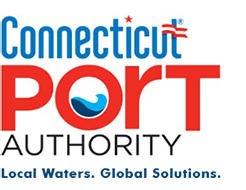The Day, December 31, 2022
By Brian Hallenbeck
Offshore wind power, the reason for the much-ballyhooed, ongoing transformation of State Pier in New London, could provide endless opportunities for small businesses that secure a niche in the supply chain that feeds the industry.
As Carol Oldham, Northeast director of the Business Network for Offshore Wind, put it, “You don’t just put up some turbines, and that’s it.”
Oldham’s organization, a nonprofit dedicated to building an offshore wind supply chain, led a three-day workshop on the subject at the Hilton Mystic hotel in December. Sponsored by Revolution Wind, the Ørsted-Eversource partnership behind the offshore wind projects that will be staged at State Pier, and the state Department of Economic and Community Development, the workshop dubbed “Foundation 2 Blade” provided dozens of attendees ― businessowners, educators and policymakers ― with an overview of the industry and information about how to become part of it.
The Southeastern Connecticut Enterprise Region, or seCTer, and AdvanceCT hosted the workshop.
“A big misconception is that the only jobs are in the construction phase, and there’s so much more to it,” Oldham said. “A lot of folks came up to me and said, ‘I had no idea.’ Fifty percent of the expenditure in the U.K. will be on operations and maintenance ― keeping things up and running over the next 20 years.”
According to the Business Network for Offshore Wind, the industry generates jobs in such fields as steel fabrication, piling and boring, carpentry, HVAC, electrical engineering, marine engineering, sea transportation, health and safety services, information technology, environmental surveying, legal and financial services, market research and project management.
“I did not realize how much was on the table,” said Tom Krivickas, a workshop attendee and president of CT Composites, a South Windsor fiberglass fabricator. “Seeing how big the opportunity is in our area surprised me. Most everyone (at the workshop) was surprised by that.”
Krivickas said he was familiar with the offshore wind industry prior to the workshop, and was aware that certain offshore wind components, including wind turbine blades, are made of composite materials like those his firm works with. When the Block Island Wind Farm, the country’s first commercial offshore wind project, launched in 2016, he recognized potential opportunities for repair and maintenance work.
“We’re a little bit small,” he said of his 15-employee firm. “We’re not going to build those blades, but they get damaged, and not a lot of people want to attempt maintaining them.”
He said he could envision expanding his firm if it landed sufficient work in the offshore wind industry.
Ron Delfini, another workshop attendee, is president of CThru Metals, a North Branford firm that serves the aerospace, automotive, filtration and renewable-energy industries with what he called a “unique” product.
“We take metal foil and expand it,” Delfini said. “It looks like a big roll of foil. We feed it into a machine that pierces it, stretches it, and it comes out almost like fabric, paper thin, with perforations in it.”
He said the product’s potential offshore wind application is in protecting turbine blades from lightning strikes. Made from a light composite material, the blades need a way to dissipate the energy from a strike. One way would be to insert CThru’s metal foil inside the blades where it can absorb the energy and safely direct it to a ground area.
“We want to get involved in offshore wind,” said Defini, whose firm was spun off from another company two years ago and employs 15 people. “There are only three manufacturers globally who make the blades, so for us, they’re the target market ― and subcontractors.”
He said offshore wind could represent “a multimillion dollar opportunity” for CThru Metals, adding, “We’re fully prepared to add capacity.”
After attending the workshop, Aaron Smith, who owns Mystic-based Architectural Metals, a professional welding service and manufacturer, said he sees offshore wind providing opportunities in secondary steel manufacturing.
Smith said his two-person operation could make such things as stairways, railings and ladders for offshore wind turbine towers and perhaps even the small boats needed for travel between the towers and the shore.
“It’s a little sidetracked from what I’m doing now,” he said. “I didn’t know there was this much opportunity. I’ll have to change my strategy.”
Workshop attendee Jason Dycus, operations manager for McCarthy Concrete in South Windsor, said his firm could provide concrete for construction of the industry’s onshore substations.
“It’s a huge opportunity for everyone,” he said. “There are going to be a lot of jobs for everyone for the next 20 years and more. It just depends on how hard you want to go after it and are willing to partner with other companies.”
A nonunion shop, McCarthy Concrete hopes it “gets the same opportunity as everybody” to secure work in the industry, Dycus said.
Also attending the Mystic workshop was David Schill, vice president of Mohawk Northeast, the marine construction company planning to build a marine terminal and metal fabrication facility along the Thames River in New London. As a member of the board of directors of the Naval & Maritime Consortium, a network of companies involved in the maritime industry’s advanced technology sector, he’s been tracking the offshore wind industry for years.
Schill said Mohawk Northeast is looking at playing “a support role” in the industry.
“What I learned is that there’s a lot of opportunity if the state can coordinate efforts properly,” he said. “We have multiple organizations looking into offshore wind, and those organizations need to come together. … We need to have one entity, one person that’s leading the charge for offshore wind.”

